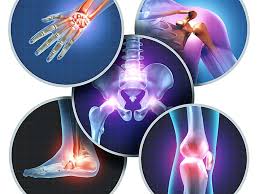
Walking is a simple, accessible, and enjoyable form of exercise that has been practiced by humans since time immemorial. From strolling through parks to hiking rugged trails, walking offers a multitude of benefits for both physical and mental well-being. In this article, we explore the numerous advantages of incorporating walking into your daily routine.

Physical Benefits:
Improved Cardiovascular Health:
Walking plays a crucial role in maintaining cardiovascular health. Regular walking strengthens the heart muscle, improves circulation, and helps lower blood pressure and cholesterol levels. It’s a low-impact exercise that can be easily integrated into daily life, making it accessible to people of all ages and fitness levels. By engaging in brisk walking sessions, individuals can effectively reduce their risk of heart disease, stroke, and other cardiovascular conditions. Additionally, walking promotes weight management, which further contributes to heart health. Incorporating walking into your routine is a simple yet powerful way to prioritize your cardiovascular well-being and lead a healthier life.
Weight Management:
Walking is an essential component of weight management for several reasons. Firstly, it’s a low-impact aerobic exercise that burns calories and helps create a calorie deficit, which is necessary for weight loss. Even a leisurely stroll can contribute to this deficit over time.
Additionally, walking increases your metabolic rate, especially if you engage in brisk walking or incorporate uphill climbs or varied terrain. This means your body continues to burn calories even after you’ve finished your walk, aiding in weight loss efforts.
Moreover, walking helps preserve lean muscle mass while promoting fat loss. This is crucial because maintaining muscle mass supports a higher metabolic rate, making it easier to sustain weight loss in the long term.

Enhanced Muscle Tone and Strength:
Walking might not seem like an obvious choice for building muscle tone and strength compared to more intense forms of exercise like weightlifting or high-intensity interval training. However, it can still play a significant role in enhancing muscle tone and strength, particularly in the lower body and core muscles.
Engagement of Muscles: While walking primarily targets the muscles of the legs, it also engages muscles throughout the body, including the core, glutes, and even the upper body if you swing your arms vigorously. Walking on different terrains like uphill or on uneven surfaces can further challenge these muscles, leading to increased tone and strength over time.
Consistency and Sustainability: One of the key benefits of walking for muscle tone and strength is its sustainability. Unlike high-intensity workouts that may lead to muscle fatigue or burnout, walking can be done consistently over long periods without risking injury or exhaustion. This consistency allows for gradual muscle development and improved endurance.
Low-Impact Nature: Walking is a low-impact exercise, meaning it puts minimal stress on the joints compared to activities like running or weightlifting. This makes it suitable for individuals of all fitness levels and ages, including those with joint issues or injuries. By strengthening the muscles surrounding the joints, walking can also help prevent injury and improve overall joint health.
Functional Strength: Walking involves movements that mimic everyday activities, such as standing, balancing, and propelling the body forward. As a result, it helps develop functional strength that translates into improved performance in daily tasks and activities of daily living.
Complementary Exercise: While walking alone may not be sufficient for advanced muscle building, it can complement other forms of exercise by providing active recovery days or serving as a warm-up or cool-down activity. Incorporating resistance exercises or bodyweight exercises alongside walking can further enhance muscle tone and strength

Joint Health:
Walking is incredibly important for joint health, offering a range of benefits that contribute to overall joint function and well-being:
Low-Impact Exercise: Walking is a low-impact activity, meaning it puts minimal stress on the joints, particularly when compared to high-impact exercises like running or jumping. This makes it an excellent choice for individuals with joint issues or those recovering from injuries, as it helps improve joint mobility and flexibility without exacerbating pain or causing further damage.
Joint Lubrication: When you walk, the motion helps to lubricate the joints with synovial fluid, which nourishes the cartilage and keeps it healthy. Regular walking can therefore contribute to better joint lubrication and reduce stiffness, particularly in weight-bearing joints such as the knees and hips.
Strengthening Surrounding Muscles: Walking engages the muscles surrounding the joints, including those in the legs, hips, and core. As these muscles become stronger and more stable, they provide better support to the joints, reducing the risk of injuries and alleviating strain on the joint structures.
Maintaining Healthy Weight: Walking can aid in weight management or weight loss, which is crucial for joint health, especially in individuals who are overweight or obese. Excess weight puts added stress on the joints, particularly the knees and hips, which can lead to conditions like osteoarthritis. By maintaining a healthy weight through regular walking, you can reduce the burden on your joints and lower the risk of developing joint-related issues.
Improved Blood Circulation: Walking promotes better blood circulation throughout the body, including to the joints. This helps deliver essential nutrients and oxygen to the joint tissues, supporting their repair and regeneration.
Enhanced Range of Motion: Regular walking can help improve joint flexibility and range of motion, making it easier to perform daily activities and maintain functional independence, especially as you age.

Boosted Immune Function:
Walking plays a significant role in boosting immune function, offering several benefits that support overall immune health:
Stress Reduction: Walking, especially outdoors in natural settings, has been shown to reduce stress levels. Chronic stress weakens the immune system, making you more susceptible to illnesses. By incorporating regular walks into your routine, you can help lower stress hormones like cortisol and promote a more robust immune response.
Enhanced Circulation: Walking improves blood circulation throughout the body, including to the immune system organs such as the spleen and lymph nodes. This enhanced circulation ensures that immune cells and antibodies can travel more efficiently through the bloodstream, effectively patrolling for and fighting off pathogens.
Regulated Inflammatory Response: Moderate exercise, like walking, helps regulate the body’s inflammatory response. Chronic inflammation is linked to various health issues, including autoimmune diseases and decreased immune function. By engaging in regular walks, you can help maintain a balanced inflammatory state, supporting optimal immune function.
Improved Sleep Quality: Regular physical activity, including walking, has been shown to improve sleep quality. Quality sleep is essential for a healthy immune system, as it allows the body to repair and regenerate cells, including immune cells. By getting adequate restorative sleep, you can bolster your body’s defenses against infections and illnesses.
Weight Management: Walking is an effective form of exercise for weight management. Maintaining a healthy weight is important for immune function, as obesity is associated with chronic inflammation and increased susceptibility to infections. By incorporating regular walks into your routine, you can help manage your weight and support your immune system.
Mood Enhancement: Exercise, including walking, stimulates the release of endorphins, the body’s natural feel-good hormones. Improved mood and reduced feelings of depression and anxiety have been linked to enhanced immune function. By enjoying regular walks, you can uplift your mood and support your body’s immune response.

Mental and Emotional Benefits:
Stress Reduction: Walking outdoors in nature can have a calming effect on the mind, reducing stress levels and promoting relaxation. It provides an opportunity to unplug from digital devices and connect with the natural world.
Improved Mood: Physical activity, including walking, stimulates the release of endorphins, often referred to as “feel-good hormones.” This can alleviate symptoms of depression and anxiety, promoting a more positive outlook on life.
Enhanced Cognitive Function: Walking has been linked to improved cognitive function and reduced cognitive decline in older adults. It can enhance memory, attention, and creativity.
Better Sleep: Engaging in regular physical activity like walking can improve sleep quality and duration, leading to increased energy levels and overall well-being.
Increased Social Interaction: Walking can be a social activity when done with friends, family, or walking groups. It provides an opportunity for meaningful conversations and strengthens social connections, which are vital for mental health.
Conclusion:
Incorporating regular walking into your daily routine can have a profound impact on your physical, mental, and emotional well-being. Whether you prefer a leisurely stroll or a brisk power walk, the benefits are undeniable. So lace up your shoes, step outside, and start reaping the rewards of this simple yet powerful form of exercise. Your body and mind will thank you for it.
